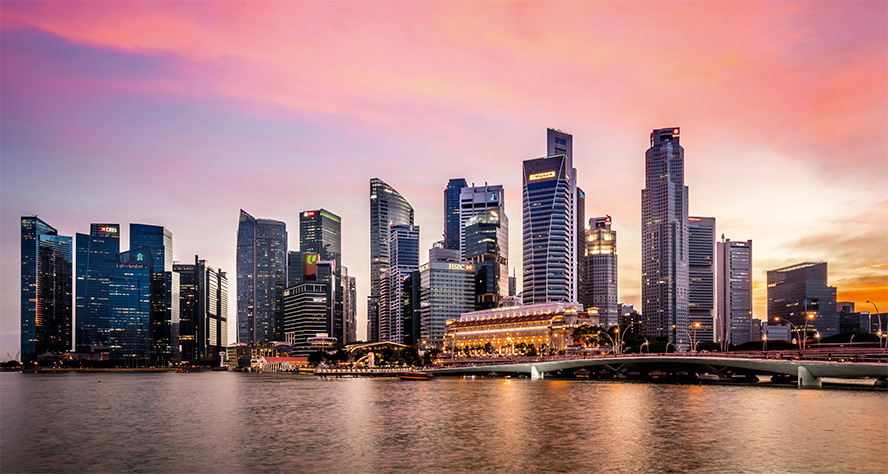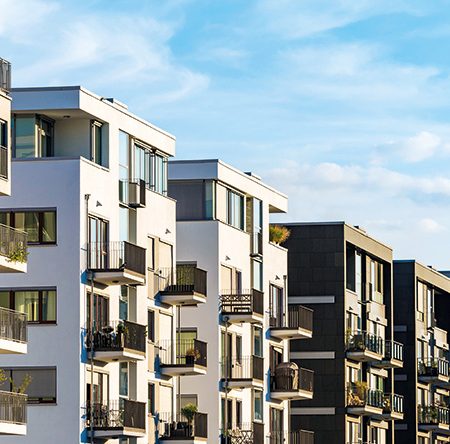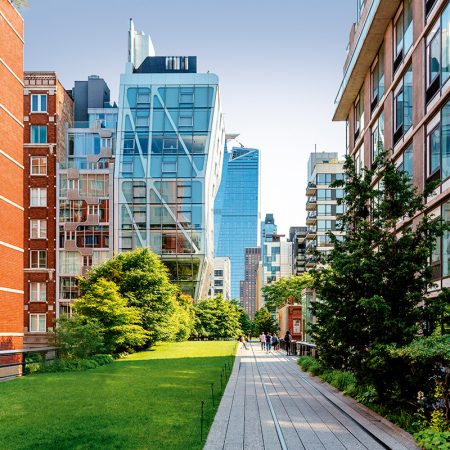When the pandemic hit, the world’s cities fell quiet and the skies were notably empty of the planes that usually drone with steady frequency overhead, their flight paths like spools of yarn connecting us as they lace the globe.
The pandemic’s abrupt, initial impact was comparable everywhere, from Hong Kong to London, but how individual cities have performed in the wake of the initial lockdowns is complex and varied, shaped by factors such as liveability, public policy (e.g. travel restrictions), and the extent to which local wealth generation has continued to support demand. More recently, the war in Ukraine has brought renewed geopolitical uncertainty, contributing to inflationary pressures and rising living costs.
What is certain, is that the events of the past few years have prompted people to re-examine their priorities, particularly when it comes to how and where they live.
How cities have performed in the wake of the initial lockdowns is complex and varied, shaped by factors such as liveability, public policy and local wealth generation
“The pandemic allowed everyone to re-evaluate both what and who is important to them,” says Kane Manera, an agent at Corcoran, Savills affiliate in New York. “An overwhelming part of that became a recalibration of home. Upsizing, downsizing, or seeking out multiple homes across different locations.”
The race for space
Affluent residents of cities like New York and London retreated to second homes in Connecticut or the Cotswolds. “Wealthy buyers who didn’t already own a place in the country bought one,” says Jonathan Hewlett, Head of London Residential, Savills UK.
But many who remained in the city also decided it was time for a change. Families sought out private outdoor space or proximity to parks, as well as larger properties with room for a home office. “It became quickly apparent to people on Zoom that sitting at the foot of the bed wasn’t very practical,” says Hewlett.
For a time, Hewlett’s strongest markets were not prime central London neighbourhoods like Chelsea and Knightsbridge, popular among international buyers, but rather domestic areas like Islington or Battersea. And what initially appeared to be pent-up demand from the lockdowns continued. “I’ve never seen such high-value sales take place [in this market],” says Hewlett. “People were spending £5 million to £20 million. Thirty of those deals were done last year; normally we would see a third of that.”
Residential rebound
With 2021’s vaccine rollout opening many borders and injecting new confidence into urban living, buyer activity also resumed at the top end of the London market. “People realised London was not a ghost town, and that people would go back to working in offices. It’s human nature, wanting to connect personally,” says Hewlett.
Apple mobility data, which tracks people on foot using their phones – for example, for directions on their way to dinner – showed a surge in user activity in Europe and North America in 2021. And overall, where a sense of vibrancy has returned to urban centres, residential markets have rebounded too.
Rental markets in particular made a staggering recovery in the second half of 2021, the strongest six-month performance in seven years. In New York, for example, more leases were signed during this period than ever recorded, resulting in 6.3% rental value growth over the course of the year.
6.3% Rental markets made a staggering recovery in the second half of 2021. New York, for example, saw rental value growth of 6.3% over the course of the year
In Berlin, where a housing shortage and growing population have long kept rents and capital values rising, the pandemic added further pressure. “Even people who have a flat are now looking for change and new opportunities, especially properties with private outdoor space,” says Thomas Zabel, Managing Director of Savills Residential Agency Germany. He estimates that the supply shortage combined with increasing construction costs led to a 20% price-per-square-metre increase in 2021.
A healthy reset
The pandemic also brought health and lifestyle to the fore. For some buyers this has meant a focus on properties with wellness facilities and ‘health features’ such as purified air, natural materials or resort-style amenities. For others, a healthy reset has involved relocating altogether.
“Aside from the need for space and ability to work away from the traditional office… the pandemic has been a time [for clients] to reassess their properties and work-life balance, spurring a number to relocate to a different country while continuing with their work remotely,” says Jelena Cvjetkovic, Director, Savills Global Residential.
Lifestyle markets such as Lisbon and Miami have fared particularly well. Miami’s favourable climate, low tax rate and quality of life drove prime capital values and rents up 20% in 2021, and the city is projected for upwards of 10% growth in 2022.
Dubai also attracted its share of nomads. Residential transaction volumes grew by 74% in 2021, activity led by villa and townhouse developments. “Remote working enabled business owners from abroad to make Dubai their main hub and enjoy the tax-free living that it offered,” says Helen Tatham, Head of Residential Community Sales & Leasing, Savills Dubai. The trend continued into 2021, she says, as affluent buyers identified Dubai as an ideal winter destination to buy second homes. Residential prices in Dubai’s prime sector increased by 17.4% in 2021.
Living with uncertainty
Meanwhile, growth in China and Asia-Pacific has remained mixed as a result of government cooling measures and pandemic-related uncertainty. While Seoul, Sydney and Singapore all performed well in 2021, mainland China and Hong Kong in particular continued to experience pandemic-induced uncertainty and restrictions. Controls on movement of wealth in China have supported growth in first-tier cities such as Shanghai, however, where wealth has funnelled into a limited supply of prime stock.
Shirley Tang, Senior Director of Residential Sales, Savills Shanghai, says that more than 40,000 high-end properties priced in excess of RMB 10 million were sold in 2021, setting a new record for China’s prime residential market. “The public showed much more interest in buying properties to protect personal assets,” she says.
Reconnecting globally
As nations learn to live with Covid-19 and economies recover, growth in the prime residential sector is forecast to continue. Average prime property price growth is projected at 4.3% in 2022, though the positive outlook will vary from city to city.
4.3% Average prime property price growth is projected at 4.3% in 2022, though the positive outlook will vary from city to city
Which markets benefit will depend in part on the return of international travel, and in particular the return of Asian travellers and buyers to key urban centres. The next phase will be a truly international market comeback.
Monthly airport passenger numbers reveal steadily climbing figures at Heathrow, Dubai, Sydney and Melbourne, while numbers at Hong Kong International Airport flatline. Would-be buyers from Asia have adopted a ‘wait and see’ attitude, says Shirley Tang, as restrictions continue to stunt a usual flow of travel.
But there are signs of global ties reconnecting. Loosening travel restrictions in the US and the UK have already led to an increase in cross-border transactions, and with prices in prime central London still circa 20% off their 2014 peak, Jonathan Hewlett says his clients strongly believe that “now is the time to get in”.
Monthly airport passenger numbers reveal steadily climbing numbers at Heathrow, Dubai, Sydney and Melbourne, while numbers at Hong Kong International Airport flatline
When the travel ban was lifted in the United States in November 2021, buyers from the UK and Europe were quick to seize on parts of Manhattan where prices had softened, says Kane Manera. And while international travel challenges remain, he says India has quickly taken the mantle as the foreign market with the most purchasing power.
Manera believes looming inflation and interest rate hikes, plus a desire to get back into the thrill of city life, means buyers are clear about what they want: best-in-class buildings, staff and services, all with heightened health and safety. “In 2022 everyone will be wishing they bought in 2021, because everyone in 2021 wished they bought in 2020,” he says.



